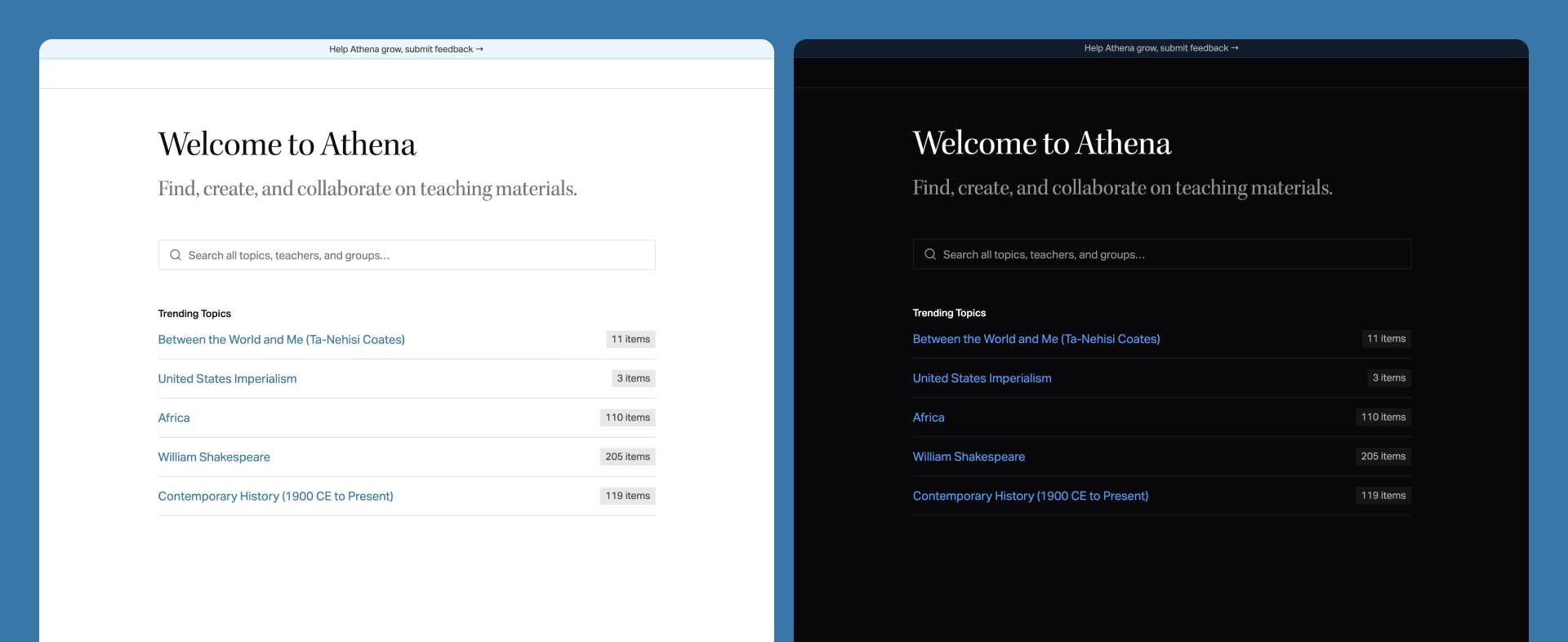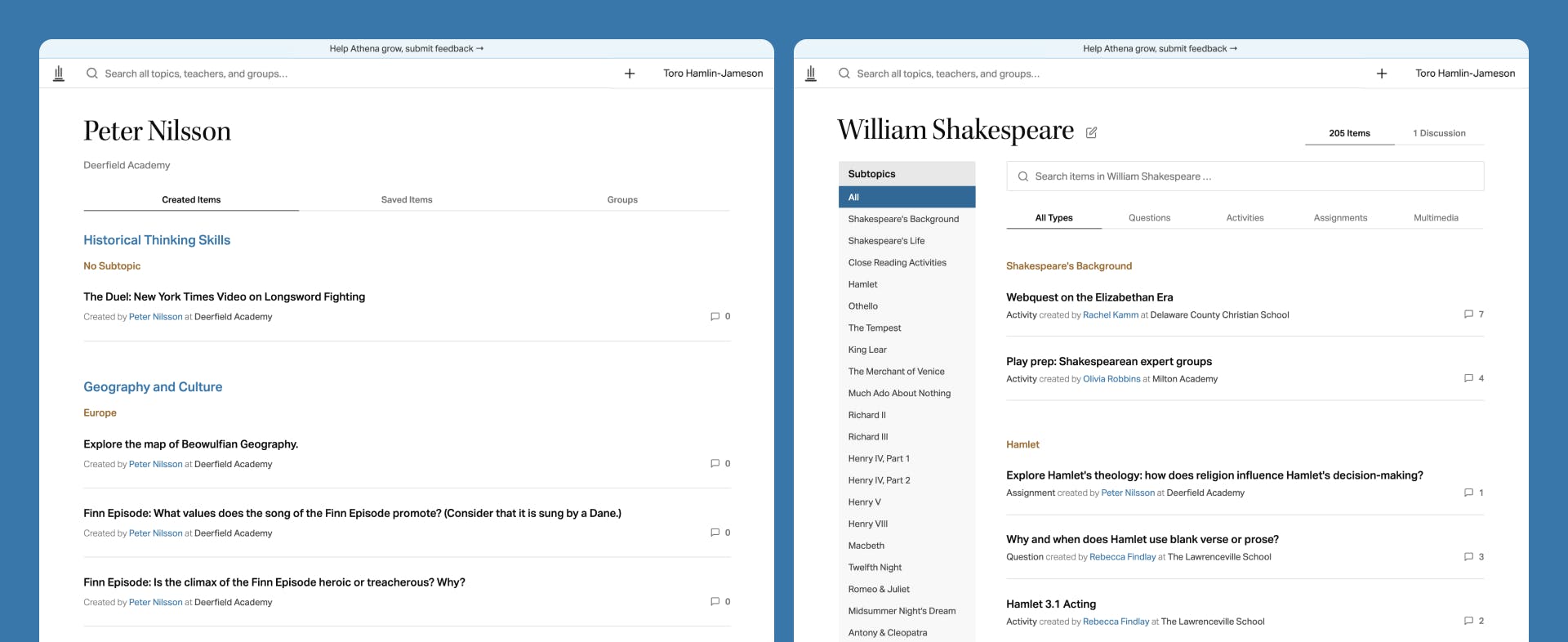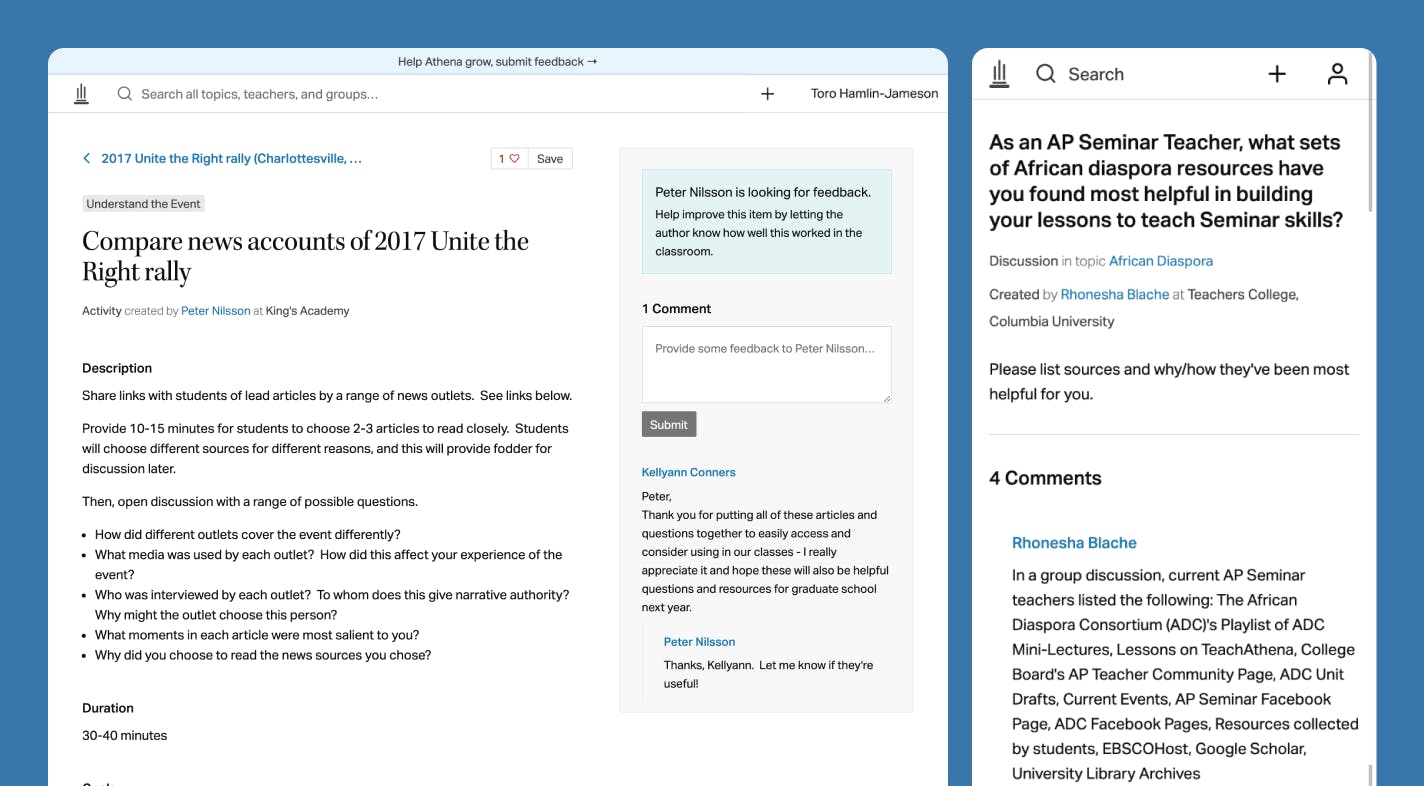Athena
Athena came to thoughtbot with a radical insight: the field of education has no professional memory.

Challenge
Re-platform and expand solution

Outcome
Continued adoption, customer growth


A Need for Community
Athena and thoughtbot came together again in 2018 for another week-long product design sprint with a brand new problem statement.
“Students are learning from teachers whose isolation results in teacher stress, insecurity, limited competence, stagnation, and/or ultimately inefficiency.”
In 2015, we’d captured the notion of stagnant growth indirectly, through one clause in the identified problem statement: “give and receive feedback on teaching content.” In 2018, we brought this to the forefront and validated a number of assumptions around community-building features, like topic- and group-based discussions among teachers.
Given available funds, we didn’t shift to executing on these ideas right away, instead tailoring subsequent interviews with teachers to continue honing in on the ideas we had identified during this sprint.

thoughtbot is a reliable partner that delivers high-quality work around design, development and business guidance.
Reimagination and Expansion
With two years of further validation that teachers need stronger opportunities for developing community, a global pandemic pushing educators and students further towards digital solutions, and a matching grant, Peter re-engaged thoughtbot for a third time in 2020.
During this engagement the team focused on both a re-platforming and redesign of the front-end and back-end architectures (which served teachers well for five years!), as well as expansion of the feature set to support improved engagement mechanisms.
From discussions on topics and within groups to improved searching and surfacing of relevant content based on user engagement, thoughtbot and Athena focused on these areas of largest opportunity to improve the teacher experience.

Continued Relationship
Neither Athena nor thoughtbot fully understood the impacts the platform would have on teachers’ fulfillment and growth when we set out to reimagine the platform in 2015.
Over more than five years of working together across three discrete engagements, tens of teacher interviews, hundreds of small features and improvements, and thousands of lines of code written, we are proud to be responsible for the digital product design and development of a platform empowering teachers that’s grown year over year.

